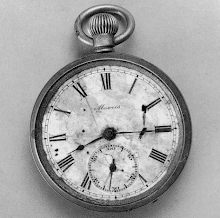Good afternoon, Mr. Hengst. In response to your questions, see the following:
Q: When will your agency intrusively investigate the mounds of soil where munitions debris was found on the west side of [Fort Totten] park last spring?
A: This investigation is a high priority for NPS [National Park Service] and the Army. However, we do not have a date yet, as we are still working to identify funding for the investigation. The area has been closed and made safe until that work is undertaken.
Q: Can that investigation include the rest of the original staging area north of the road where the Spring Valley landfill was dumped [pg. 2] in 1992?
A: The investigation is expected to focus on the area north of Farragut Street NE where WMATA conducted staging [pgs. 13 - 14] for the Metrorail Green Line construction. It would also look at areas along the roadway that were disturbed when Holcim (formerly Aggregate Industries) bulldozed along the roadway in early 2023. Further investigations beyond this immediate area will be determined upon the results of this work.
pg30.png)
Q: Why doesn’t your agency return to the eastern section of the park for a closer look at land on either side of the narrow foot trail where the 75mm was unearthed in July 2020?
A: An investigation of the area east of the CSX/Metrorail tracks, between Gallatin and Galloway Streets NE, may be considered for a later time. We have requested, and are receiving, information from WMATA about their construction activities in this area. We are also working with the Army on a history of the Fort Totten sites and their uses over time. Our intent is to better understand the work conducted by WMATA, and how construction materials may have been moved around between the sites east and west of the tracks, before we look more closely into an investigation of this area.
Brian Joyner, Acting Superintendent
National Park Service
November 16, 2023
Dear Deputy Superintendent;
I’m writing to inquire on the status of the Park Service’s investigation of World War I-era chemical munitions and laboratory waste buried at Fort Totten National Park. As you know, in addition to a 75mm shell exposed by heavy rains on a foot trail in the eastern arm of the park in July 2020, two additional artillery shells were discovered in mounds of soil along a road inside the western section last April. News media in May reported that discussions of whether a major cleanup might be required in the park were paused due to questions about the contents of a Livens Projector found in one of those mounds. Earlier this week at Tuesday’s public meeting of the Spring Valley FUDS Restoration Advisory Board (RAB), project manager Dan Noble said that — after detecting chlorine in the liquid fill of the century-old artillery shell — the Army Corps sent the Livens to Edgewood Arsenal for further analysis.
Noble reported on a site visit he conducted to inspect the soil mounds before they were stabilized and showed before-and-after photos of the area, which have been posted on the Army's website (pgs. 29 - 33). Noble also described his serendipitous discovery of two additional items as he walked past the mounds: a metal munition fragment and glass beaker lid that were “very similar” to material investigators typically encounter at the FUDS cleanup site in Spring Valley. Regardless of Edgewood’s findings on the specific content of the Livens shell, it’s obvious that more munitions debris and laboratory waste remains buried at Ft. Totten following the 1992 dump of toxic landfill from excavations on Glenbrook Road in Spring Valley ...
Allen Hengst
Email to NPS
October 13, 2023 (pgs. 3 - 4)
WASHINGTON — An area of Fort Totten Park remains closed and fenced, and cement barriers and “no trespassing” signs will remain while the National Park Service (NPS) and U.S. Army further investigate the metal canisters, determined to be WW I-era munitions, found there in the spring. Based on investigations to date, the NPS and the Army have determined it is possible Fort Totten Park contains additional munitions. The two metal canisters, found April 18, were discovered in the park after unauthorized work conducted by an adjacent property owner pushed approximately 10 feet of soil onto NPS land. One munition was a 75-mm projectile, approximately 3 inches in diameter and 11 inches long. The other munition was a Livens projectile, approximately 6 inches in diameter and 19 inches long.
.jpg)
The MARB was established in 1995 (US Army)
Initial assessment by Army experts indicated the 75-mm projectile did not pose a hazard and the Livens projectile contained an unknown liquid ... Both items were evaluated by the Army’s Materiel Assessment Review Board (MARB) ... Initial testing of the liquid in the Livens projectile was inconclusive, so it was taken to Aberdeen Proving Ground in Edgewood, Maryland, on Aug. 2, for additional testing. The additional testing indicated that the Livens did not pose a hazard ... The NPS and Army are seeking funding to conduct a comprehensive investigation at Fort Totten Park. More information regarding the use of the site during the construction of the Metrorail Greenline can be found here.
Autumn Cook
National Park Service
November 9, 2023
 "The area in the south and the west and the north that coalition forces control is substantial. It happens not to be the area where weapons of mass destruction were dispersed. We know where they are. They're in the area around Tikrit and Baghdad and east, west, south and north somewhat."
"The area in the south and the west and the north that coalition forces control is substantial. It happens not to be the area where weapons of mass destruction were dispersed. We know where they are. They're in the area around Tikrit and Baghdad and east, west, south and north somewhat."pg30.png)
pg29.png)
.jpg)


